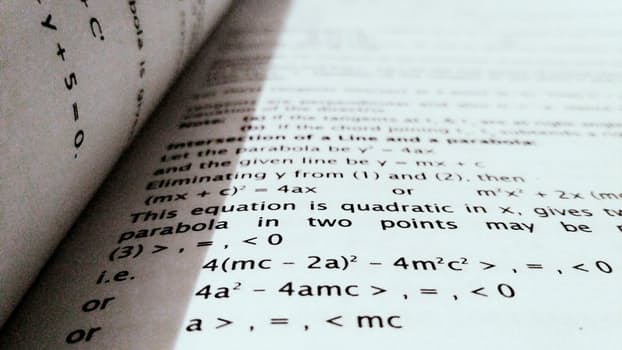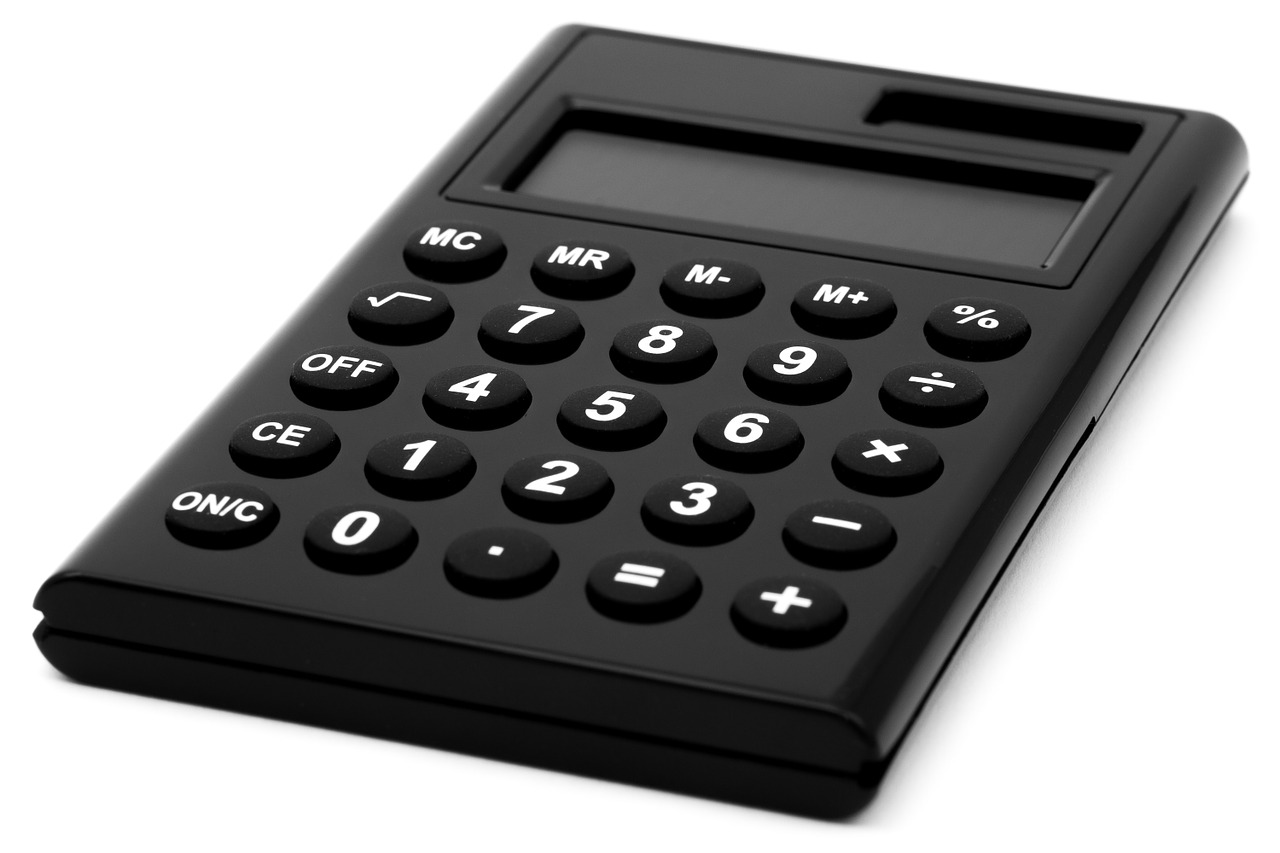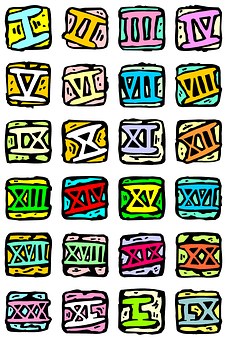
Let’s start with the obvious: the data sufficiency questions on the GMAT are really weird. They look nothing like any question you’ve seen in math class. For one thing, every single data sufficiency question has the same five answers. For another, data sufficiency questions aren’t just testing your math skills. They’re also testing your ability to analyze a set of data and decide what information you need to answer the question.
In this guide, I’ll walk you through the GMAT data sufficiency section, give you several strategies for solving GMAT data sufficiency questions, and offer tips for preparing for these unique questions. I’ll also take you through solving several retired sample GMAT data sufficiency questions.
GMAT Data Sufficiency Overview
Data sufficiency questions are one of two types of questions on the GMAT quant section. While there is no set number of data sufficiency questions on the quant section, GMAT Club reports that data sufficiency questions generally make up just under half of questions on the quant section. Since there are 31 questions in Quantitative Reasoning, about 15 of them will be data sufficiency questions.
A GMAT data sufficiency question is made up of a question and two statements, labeled (1) and (2). Your job is to decide whether the data given in each of the statements is sufficient (enough) to answer the given question. You’ll need to use the data in the statements, basic knowledge of high-school-level mathematics, and everyday facts (like the number of days in a given month) to answer the question.
There are five possible answer choices for every data sufficiency question:
Not sure how or what to study? Confused by how to improve your score in the shortest time possible? We've created the only Online GMAT Prep Program that identifies your strengths and weaknesses, customizes a study plan, coaches you through lessons and quizzes, and adapts your study plan as you improve.
We believe PrepScholar GMAT is the best GMAT prep program available, especially if you find it hard to organize your study schedule and don't want to spend a ton of money on the other companies' one-size-fits-all study plans.

- Statement (1) ALONE is sufficient, but statement (2) alone is not sufficient
- Statement (2) ALONE is sufficient, but statement (1) alone is not sufficient
- Both statements TOGETHER are sufficient, but NEITHER statement ALONE is sufficient
- EACH statement ALONE is sufficient
- Statements (1) and (2) TOGETHER are NOT sufficient
You’ll have to use high school level math skills in arithmetic, algebra, geometry, and word problems to solve data sufficiency questions. For instance, you may see questions on properties of integers, sets, and counting methods. GMAT data sufficiency questions often require you to use more than one skill. You might be determining the average of a set of numbers for the first statement, and solving for a variable in the second statement. For more information on the math tested on the GMAT quant section, check out our complete guide to GMAT math topics.

Sample GMAT Data Sufficiency Questions
In this section, I’ll walk you through solving several sample GMAT data sufficiency questions.
Sample Question #1
A certain group of car dealerships agreed to donate x dollars to a Red Cross chapter for each card sold during a 30-day period. What was the total amount that was expected to be donated?
- A total of 500 cars were expected to be sold.
- 60 more cars were sold than expected, so that the total amount actually donated was $28,000.
- Statement (1) ALONE is sufficient, but statement (2) alone is not sufficient
- Statement (2) ALONE is sufficient, but statement (1) alone is not sufficient
- Both statements TOGETHER are sufficient, but NEITHER statement ALONE is sufficient
- EACH statement ALONE is sufficient
- Statements (1) and (2) TOGETHER are NOT sufficient
Correct Answer: C
sample question #1 Explanation
The best way to approach data sufficiency questions is to take each statement individually first, before having to consider them together. To that end, let’s start with statement 1.
Statement 1: The question asks us to determine how much money will be donated to the Red Cross based on the number of cars sold at the dealership. With data sufficiency questions, we always want to start with what we know.
We know that 500 cars are expected to be sold, as it tell us that in statement 1. Now, we need to decide if we can figure out how much money will be donated.
The question tells us that x dollars will be donated for each car sold, so the equation 500x represents the total amount of the expected donation.
However, we don’t know the value of x, and we have no way of determining it from the information given. So, we cannot solve the equation 500x, meaning that statement 1 is NOT sufficient for us to solve this problem.
Statement 2: Just as we took statement 1 by itself, let’s take statement 2 by itself first.
Statement 2 tells us that 60 more cars were sold than expected. If we know that x represents the amount of money donated to the Red Cross for each car, then we know that 60x represents the amount donated beyond the expected amount, because 60 cars were sold and x dollars were donated for each car.
If the total amount of the donation was $28,000, then the total amount that was expected can be found using the equation $28,000 – 60x, with 60x representing the unexpected amount we found before. Since we don’t know what x represents, we can’t find the total amount of the expected donation using Statement 2 alone.
Now that we’ve evaluated both statements individually, it’s time to evaluate them together. The first thing I notice when I look at both statements is that both statements have x in them. That means that I can combine the statements and solve for x.
Combining the two statements yields me the equation 500x = 28000 – 60x. From there, I can determine the total amount of the expected donation since I can combine like terms and solve for x.
Notice that I don’t actually have to solve this equation. All I need to do is know that I can solve it. Since I can solve with the statements together, but not alone, my correct answer is C.

Sample Question #2
A certain wooded lot contains 56 oak trees. How many pine trees does the lot contain?
Want to improve your GMAT score by 60 points?
We have the industry's leading GMAT prep program. Built by Harvard, MIT, Stanford, and Wharton alumni and GMAT 99th percentile scorers, the program learns your strengths and weaknesses and customizes a curriculum so you get the most effective prep possible.

- The ratio of the number of oak trees to the number of pine trees in the lot is 8 to 5.
- If the number of oak trees was increased by 4 and the number of pine trees remained unchanged, the ratio of the number of oak trees to the number of pine trees in the lot would be 12 to 7.
- Statement (1) ALONE is sufficient, but statement (2) alone is not sufficient
- Statement (2) ALONE is sufficient, but statement (1) alone is not sufficient
- Both statements TOGETHER are sufficient, but NEITHER statement ALONE is sufficient
- EACH statement ALONE is sufficient
- Statements (1) and (2) TOGETHER are NOT sufficient
Correct Answer: D
The first step in this question is to figure out what you’re trying to solve for. The question asks you how many pine trees the lot contains. Let’s use p as our variable to represent the number of pine trees the lot contains. You’re trying to solve for p in this equation.
Statement 1: Remember, we always want to start out by evaluating each statement individually. Statement 1 says that the ratio of oak trees to pine trees is 8 to 5. The ratio 8 to 5 can also be represented as 8/5. We can also say that the number of oak trees to pine trees is 56 to p, or 56/p, based on the information in the question.
Now, we can set the equations equal to each other because they both represent the same thing (ratio of oak to pine trees). Setting the equations equal to each other yields the equation 8/5 = 56/p. Because there is only one variable in this equation, I will be able to solve for p with no extra information. Statement 1 is therefore sufficient to answer the question.
Statement 2: Even though we already know that Statement 1 is sufficient, we’re still going to solve evaluate Statement 2 by itself first. Statement 2 says that the number of oak trees increased by 4. The question tells us that the original number of oak trees was 56, so 56 + 4 = 60. 60 is the new number of oak trees.
Next, the statement tells us that the ratio of oak trees to pine trees is now 12 to 7. We can also write the ratio of 12 to 7 as 12/7. We can also say that the number of oak trees to pine trees is 60 to p or 60/p. Just as we did with Statement 1, we can set the equations equal to each other, yielding the equation 60/p = 12/7.
Remember, we don’t need to solve for p, we just need to know that we can. Based on the information in Statement 2, we can also solve for p.
Statements 1 and 2 both contain enough information for us to answer the question, so the correct answer is D.
Sample Question #3
Does 2m – 3n = 0?
- m ≠ 0
- 6m = 9n
- Statement (1) ALONE is sufficient, but statement (2) alone is not sufficient
- Statement (2) ALONE is sufficient, but statement (1) alone is not sufficient
- Both statements TOGETHER are sufficient, but NEITHER statement ALONE is sufficient
- EACH statement ALONE is sufficient
- Statements (1) and (2) TOGETHER are NOT sufficient
Correct Answer: B
Let’s start off by examining the question. We always want to make sure we understand what the question is asking us. We also want to make sure that we simplify the question, if possible, because simplifying the question will give us easier and clear equations to use as we solve the problem. In this case, we can simplify the question. The question “Does 2m – 3n = 0” is equivalent to the simpler question “Does 2m = 3n?”
Statement 1: If you’ve read the explanations for the previous two questions, I probably sound like a broken record by now, but I’ll repeat myself again. Remember, we always want to evaluate each statement individually, before looking at them together.
Let’s look at Statement 1 by itself. Statement 1 says that m doesn’t equal 0. That doesn’t give us a lot of information. Let’s go back to the original equation and see what we can learn there.
Want to Identify YOUR GMAT Strengths and Weaknesses?
Our proprietary GMAT Diagnostic Assessment creates a customized study plan for you that takes you from registration all the way to test day! It is included with every account and proven to significantly maximize your score.
Get your personalized assessment as part of your 5 day risk-free trial now:

In the original, we see that 2m = 3n. In that equation, we also don’t have a lot of information. Statement 1 leaves an infinite range of possible values for m, and, since neither Statement 1 nor the original equation address possible values for n, we have no way to figure out the relationship between m and n. Therefore, Statement 1 is not sufficient.
Statement 2: Even though we know Statement 1 isn’t sufficient, we’re going to try to figure out Statement 2 by itself first. Statement 2 says that 6m = 9n. Right away, I notice that both 6 and 9 are multiples of 3, so the equation can be simplified by dividing each term by 3.
When I divide each term by 3, I get 6m/3 = 9n/3. If I simplify that, I get 2m = 3n. Remember, 2m = 3n is the original equation I’m looking for, so Statement 2 is sufficient and the correct answer is B.

Sample Question #4
If n is a member of the set {33, 36, 38, 39, 41, 42}, what is the value of n?
- n is even.
- n is a multiple of 3.
- Statement (1) ALONE is sufficient, but statement (2) alone is not sufficient
- Statement (2) ALONE is sufficient, but statement (1) alone is not sufficient
- Both statements TOGETHER are sufficient, but NEITHER statement ALONE is sufficient
- EACH statement ALONE is sufficient
- Statements (1) and (2) TOGETHER are NOT sufficient
Correct Answer: E
Let’s start out by understanding what the question’s asking us. It’s asking us to determine the value of n, which is a member of the set {33, 36, 38, 39, 41, 42}. So, for our statements to be sufficient, they need to help us decide which of those six numbers n is.
Statement 1: Look at Statement 1 alone first. Statement 1 says that n is even. That implies that n can be either 36, 38, or 42, because those are the even numbers of that six number set. However, there’s no other information in the statement that can help us narrow down which one of those three numbers n is. So, Statement 1 is not sufficient.
Statement 2: Statement 2 says that n is a multiple of 3. This implies that n could be 33, 36, 39, or 42. However, there’s no further distinction in Statement 2 to determine which of those four numbers n is. So, Statement 2 is not sufficient.
If we combine Statements 1 and 2 together, n is even and a multiple of three. That leaves us with n equaling either 36 or 42, with no way to determine which of those n is. Therefore, the statements are insufficient alone and together, so the correct answer is E.
4 Key Data Sufficiency GMAT Tips
Follow these data sufficiency GMAT tips to help solve tricky questions.
#1: Evaluate the Statements Individually First
Evaluating each statement individually will help you answer data sufficiency questions quickly and more easily.
Evaluate statement 1 first, then evaluate statement 2 by itself. When you do evaluate statement 2, you’ll need to forget everything you did for statement 1. Pretend that they’re two different questions. Once you’ve determined whether each statement is sufficient on its own, you’ll be able to put them together. This strategy will also save you time. For instance, if neither statement is sufficient on its own, you’ll be able to eliminate answers A, B, and E. If both statements are sufficient on their own, you’ll be able to eliminate A, B, C, and E right away.
Solve the simplest statement first. You’ll notice that the GMAT tends to have one statement that’s extremely simple, and one that’s extremely long and convoluted. You don’t have to evaluate the statements in order. Go with whatever’s easier first.
#2: Decide What Type of Question It Is
There are two basic kinds of data sufficiency questions: value questions and yes/no questions.
Value questions ask you to find a numerical value (e.g., what’s the value of 5x?). For value questions, if you’re able to find a specific value using the information in either statement, then that statement is sufficient.
Yes/no questions ask you whether or not something is true (e.g., is y an even number?). For yes/no questions, a definitive yes or a definitive no answer are both considered sufficient. An answer that is sometimes yes or sometimes no is not sufficient.
Remember: a definitive answer is always sufficient. An answer that may or may not be correct is not sufficient.
Before you start on a question, ask yourself if it is a value question or a yes/no question. This step will help you determine what kind of answer you’re looking for.
#3: Plug in Smart Numbers
You can solve many GMAT data sufficiency questions by plugging in real numbers for the variables in equations. Look for questions that have algebraic answers, or questions that ask for the values of algebraic expressions instead of just the values of variables when plugging in numbers.
When plugging in numbers, try to use easy, whole integers that match the constraints of the question. If the question asks you to use a specific type of number (e.g., a multiple of 3), make sure you’re using a multiple (e.g, use 6 instead of 54) that’ll be easy to do basic calculations with. The writers of the GMAT know that people generally pick positive, whole numbers to plug into their equations. Don’t forget about negative integers, positive and negative fractions, positive and negative decimals, etc., when analyzing a data sufficiency question. You may also need to try to plug in more than one number to test, depending on the question.
#4: Don’t Try to Fully Solve a Problem If You Don’t Have To
GMAT data sufficiency questions aren’t asking for specific answers. They’re asking if the statements contain enough information to find a specific answer. To that end, don’t do the work of fully solving a problem if you don’t have to.
For instance, if the question asks you “What is the value of y” and one of the statements is 24y + 34y = 1200, recognize that you can solve for y without taking the trouble of going through the entire process to solve that problem. You’re evaluating sufficiency of data, not looking for specific answers.
How to Prepare for GMAT Data Sufficiency Questions
While GMAT data sufficiency questions may seem daunting, these data sufficiency GMAT tips can help you more easily master your prep.
#1: Memorize the Five Answer Choices Using the 12TEN Mnemonic
Every data sufficiency question has the same 5 possible answers:
- Statement (1) ALONE is sufficient, but statement (2) alone is not sufficient
- Statement (2) ALONE is sufficient, but statement (1) alone is not sufficient
- Both statements TOGETHER are sufficient, but NEITHER statement ALONE is sufficient
- EACH statement ALONE is sufficient
- Statements (1) and (2) TOGETHER are NOT sufficient
The 12TEN mnemonic can help you remember those answers and save you time:
1: only statement 1
2: only statement 2
T: both statements together
E: either statement
N: neither statement
Using this mnemonic will help you save time on test day because you’ll already know what every question is asking you, and you’ll be able to systematically test each of the answers. You’ll also have a clear idea of what each answer choice means.
#2: Review the Fundamentals
The questions on the GMAT quant section only test high school math concepts. That means that you’ll have likely seen every skill you need to master the test. The key, then, lies in mastering these fundamentals. You won’t be able to use a calculator on the GMAT, so you’ll have to be fast with your basic calculations. Practice multiplying and dividing decimals and fractions. Memorize the exponent rules. Memorize common roots and higher powers. These simple tips will save you time and build your confidence on test day.
#3: Use High-Quality Practice Materials
Setting yourself up with solid practice tools and creating a practice schedule you can stick to will help you prepare for the data sufficiency questions. It’s important to understand what makes good GMAT quant practice, so you don’t waste your studying time.
GMAT quant practice questions should be the same format as the real GMAT. Practicing questions using the same format helps you familiarize yourself with the mechanics of the test.
GMATPrep is an online software that gives you access to two full-length practice CATs, with the option of purchasing more. The software also gives you access to 45 GMAT quant practice questions and lets you sort the questions into the sets so that you can practice specific skills (so, you can make a set that consists only of data sufficiency questions).
Check out our full guide to official and unofficial GMAT quant practice materials for more specific ideas of what to use for your prep.

What’s Next?
Learn more about the types of math skills tested on the data sufficiency questions with our GMAT math overview, or switch over to the verbal section and learn how to master the three verbal question types.
Looking for more practice resources? Check out our list of the best GMAT practice tests.
Finally, read our guide on what a good GMAT quant score is to get a better sense of how data sufficiency questions affect your score.
 PrepScholar GMAT
PrepScholar GMAT